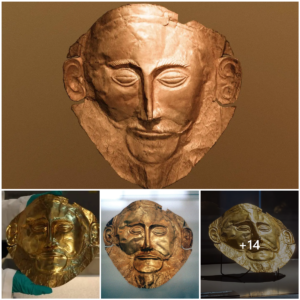In the lands of central Denmark, near the quiet village of Aasum northeast of Odense, a group of archaeologists have made an exceptional discovery: a Viking cemetery with 50 skeletons in an extraordinary state of preservation. Dating back to between 850 and 900 AD, these remains have surprised the scientific community for their integrity, something rare in excavations of this period. Thanks to the special properties of the lime-rich soil and the high levels of humidity in the region, the bodies of men, women and children have survived almost intact for more than a thousand years.

The discovery was made during a planned excavation to explore ancient agricultural settlements from the Viking Age. By removing the top layers of earth, archaeologists were astonished to discover the first graves, where the skeletons seemed to be in their original positions and barely affected by the passage of time. This unique preservation has allowed researchers to study the remains in detail, revealing information about the burial practices and living conditions of this community.
One grave in particular has caught the attention of experts: that of a woman buried inside a funeral cart. This type of burial, reserved for figures of high social status, indicates that the woman may have played a prominent role in her community. The cart, meticulously decorated and accompanied by valuable objects, reflects a hierarchical and complex society. Alongside her, brooches, necklaces and glass artefacts were found, suggesting a direct connection with trade routes extending to Gotland in Sweden and other regions of Scandinavia.

The cemetery, which covers a significant area, appears to have belonged to a settled farming community, far removed from the common image of Vikings as warriors and raiders. The varied burial practices also reveal a diverse landscape of beliefs and traditions within the community. Some bodies were found with simple grave goods, while others, such as the woman in the funeral cart, were surrounded by highly valuable offerings, reinforcing the theory of a stratified society.
Archaeologists have also unearthed other valuable objects, including knives, tools and pottery fragments that provide clues about everyday life and craft skills at the time. One particularly intriguing find is a small fragment of glass, a rare material in rural contexts from this time, which evidences the extent of Viking trade networks and their active involvement in the exchange of goods with other cultures.

Despite the excitement surrounding the discovery, scientists warn that much work remains to be done. The next step will be to conduct DNA analysis on the skeletal remains, in the hope of discovering family links between the buried individuals. These studies could shed light on the family organisation and social dynamics of the Viking community, as well as identify possible migrations from other Scandinavian regions. In addition, isotope analysis will allow archaeologists to learn details about the diet and environment in which these people lived.
The discovery of the cemetery in Aasum offers an unprecedented opportunity to reexamine the life of the Vikings from a less violent perspective and more focused on their daily life and social organization. This discovery challenges stereotypes and presents the Vikings as farmers and traders capable of building prosperous and well-connected communities.

The coming years of research at the site promise to reveal more details about this community and its role within the Viking world. Archaeologists plan to continue excavations in search of more graves, artefacts and evidence that can provide a complete picture of life in this region more than a thousand years ago. In the meantime, the Viking cemetery with its well-preserved skeletons and intriguing artefacts remains a fascinating testament to a complex and advanced culture that still has much to teach us.





